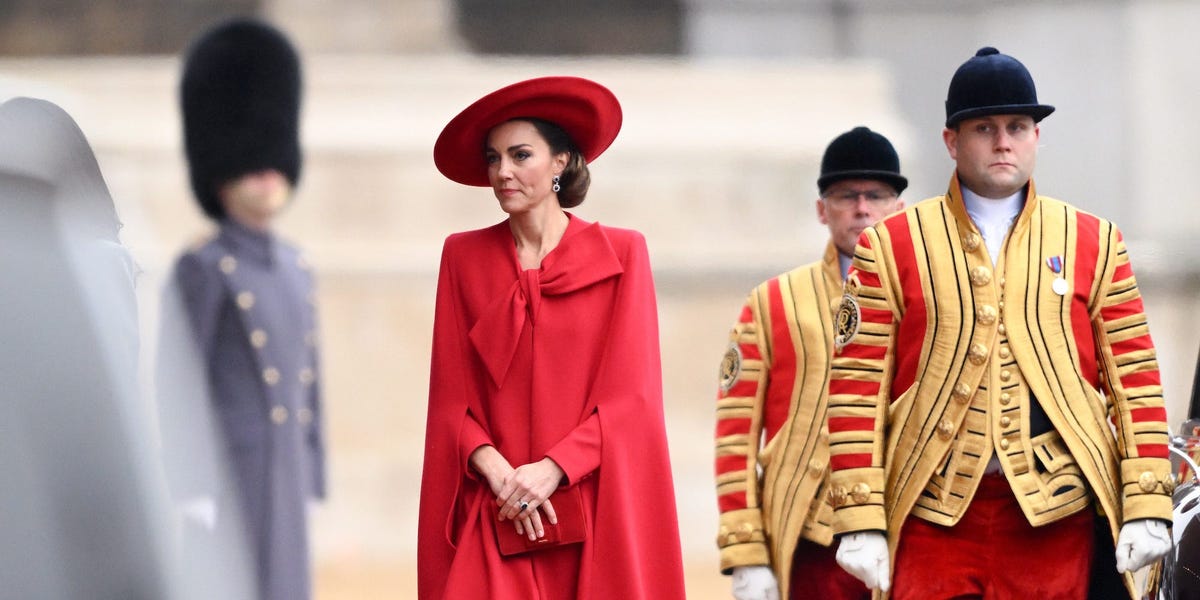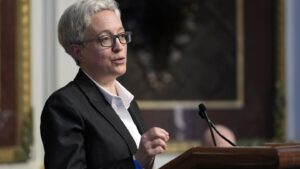- A family photo of the Princess of Wales has added fuel to the fire of a wild online conspiracy.
- Photo agencies have withdrawn the image over concerns it was manipulated.
- The fiasco proves that trusting anything online has become a total nightmare in the AI age.
Thanks for signing up!
Access your favorite topics in a personalized feed while you’re on the go.
download the app

Any other year, a Mother’s Day portrait of Kate Middleton and her children would have no business kickstarting an internet firestorm. This year is quite different.
A family photo of the Princess of Wales issued by Kensington Palace on Sunday has somehow added fuel to the fire of an online conspiracy about her whereabouts given she’s not been seen in public in an official capacity since Christmas.
The photo of three happy-looking young royals surrounding their mom has been called out by news agencies including Getty Images, The Associated Press, Reuters and AFP. All told their clients to stop using the image over concerns it had been “manipulated.”
This should have been a moment for the royal family to reintroduce Kate to the public for the first time after entering the hospital on January 17 for abdominal surgery. She had supposedly been snapped by paparazzi on March 4 riding in an SUV with her mom.
However, concerns over the family image have had the opposite effect for an entirely understandable reason. Trusting what anyone sees online has become a total nightmare at a time when AI has blurred the lines between what’s real and what is not.
Inconsistencies
Since the release of the photo, which Kensington Palace said was taken by Prince William, photography experts and internet sleuths have been quick to point out its oddities.
The AP, for instance, has pointed to “inconsistencies” in the alignment of Princess Charlotte’s left hand with the sleeve of her sweater. A wedding ring isn’t in sight on Kate’s fingers either.
On Monday, the official X account for the Prince and Princess of Wales attempted to quell the concerns by sharing a perplexing message that suggested the future Queen Consort had a side hobby of editing photos.
“Like many amateur photographers, I do occasionally experiment with editing. I wanted to express my apologies for any confusion the family photograph we shared yesterday caused. I hope everyone celebrating had a very happy Mother’s Day. C,” the message read.
Like many amateur photographers, I do occasionally experiment with editing. I wanted to express my apologies for any confusion the family photograph we shared yesterday caused. I hope everyone celebrating had a very happy Mother’s Day. C
— The Prince and Princess of Wales (@KensingtonRoyal) March 11, 2024
It’s an explanation that will likely prove hard for many to accept — thanks to AI.
AI-image generators have spread widely ever since ChatGPT accelerated the generative AI boom. In turn, the ability to distinguish between an AI-generated image and an edited one is massively complicated.
Henry Ajder, an AI and deepfakes expert, told Business Insider that “if it wasn’t for the advent of generative AI,” people might have just accepted the image.
“If this image had been released three years ago, people would have looked at it, and their immediate conclusion would have probably been ‘this is a bad editing job,'” Adjer said.
Imperfect detection tools
Part of the problem is that there’s still no way to definitively tell what content has been AI-generated.
While AI detection software exists, it’s far from perfect. Most detection tools work by delivering a percentage-based estimate, rarely give a conclusive answer and tend to offer widely different results.
When BI tested the photo in question, one site estimated the image had a 21% likelihood of being AI-generated, while another said there was a 77% likelihood.
Ajder called the tools on offer “fundamentally unreliable,” adding they can be harmful in the hands of people who are not trained in verifying content.
“What these tools do is actually create more questions than answers and further muddy the water,” he said. “These tools are giving different and often contradictory answers — there is no one detector to rule them all.”
People can also use these tools to further their own interests, he added, only sharing what aligns with their narrative and potentially utilizing them to undermine authentic images.
While tech companies are aware of the issues, they have yet to come up with a perfect solution.
OpenAI has attempted to introduce some form of digital watermarking for images generated by its AI tools, but studies indicate that most forms of marking out AI content are still rife with weaknesses.
Trust in the age of AI
The royal family’s picture is not the first to cause a debate around AI-generated content.
A hyper-realistic image of Pope Francis in a white puffer jacket kickstarted the conversation last year after many failed to realize it was fake. Since then, some have found more sinister uses for the tech, including influencing voters in upcoming elections.
Some people failed to identify an image of Pope Francis wearing a puffer jacket as a fake.
Vatican Media via Vatican Pool/Getty Images
The widespread availability of AI image-generating tools has made trusting what we see online all the more difficult, and the tech’s rapid development is set to complicate this further.
This erosion of common understanding online risks creating more division, Ajder said, with people increasingly turning to their “gut feelings” about content rather than hard evidence.
“People need to be told that your senses — your eyes and ears —are no longer reliable tools in this landscape,” he said.
Of course, it’s possible that the Palace’s version of events is accurate. Maybe it was just some bad editing. But in the age of AI, users also need to seek their own verification before trusting online content — something that’s still easier said than done.


